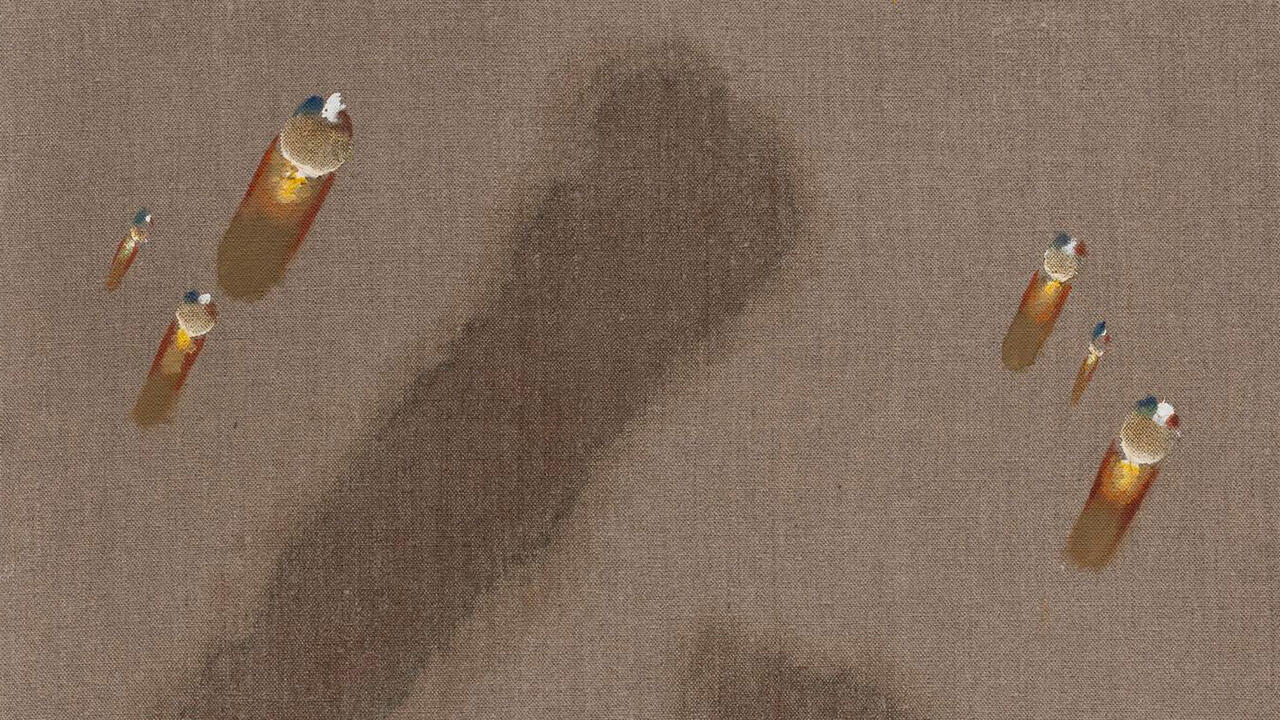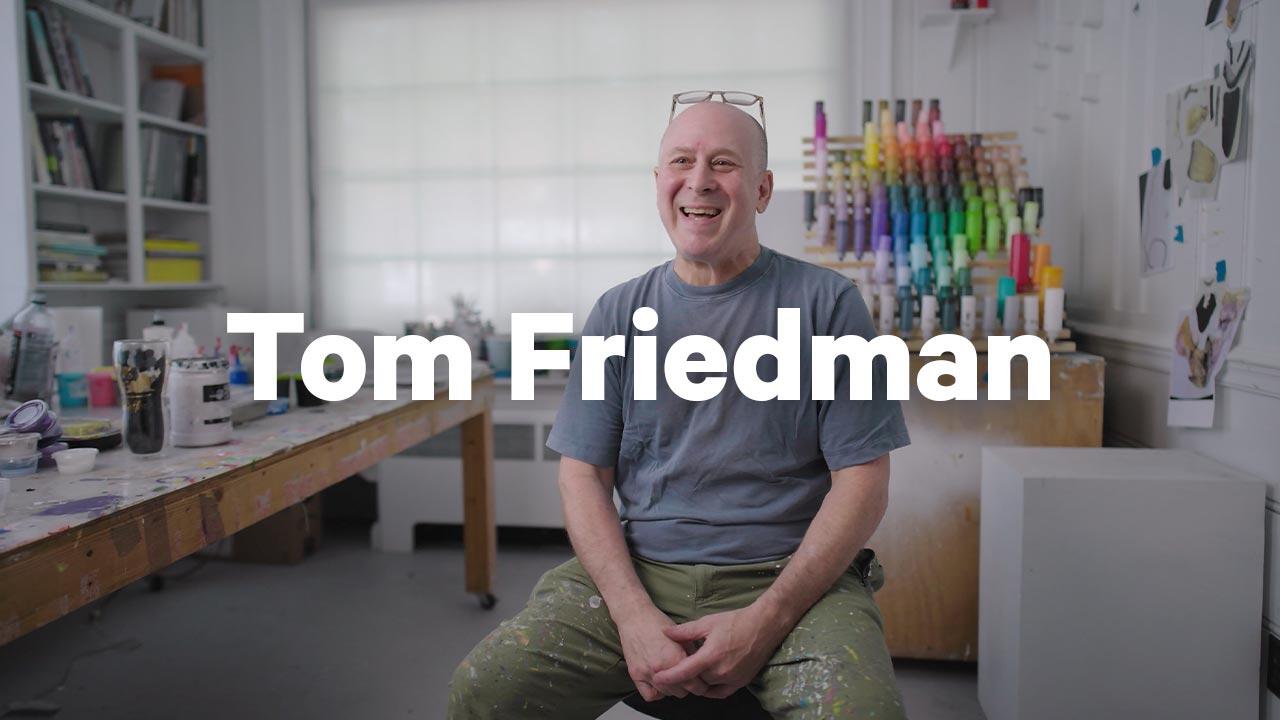Interstate
Geographical territories and migration are the political hot potatoes of our era. Physical is the new psychological, so you could say that to be profoundly moved by art is no longer solely a matter of sentiment. To reflect this transference from emotion to motion, travel sickness would encapsulate the nausea of existentialism, and dualism’s separation of body and soul would be reversed by the metaphoric clout of diasporas. Exterior landscape is internal politic.
For 'Interstate', artist Adam McEwen has brought together a number of art works relating literally to transport, landscape (and vomit) that subsequently appear to wear a politicized mantle. The works coalesce into a survey of sculptural, pictorial and typographic terrains with textures and sightlines, boundaries and conglomerations – a material sensibility that mirrors preoccupations with expeditions, definitions and utility. But the gaggle of 30-plus works is like a sketch of permutations, a half-cut ordinance in which paths are embarked on but not convincingly pursued. There are blind alleys and dead ends, ox-bow lakes and truncated spurs. Arrangements of works coax out new meanings, but this could be considered irresponsible curating by those who favour the preservation of the artist’s original intention. Lucio Fontana’s Concetto Spaziale (Spatial Concept, 1961) and its attendant references to eternity and transcendence, for instance, here reverberate with bathetic machismo between Ed Ruscha’s Business Card (1963) (‘Ed-werd Rew-shay, young artist’) and Dan Graham’s text on post-coital detumescence.
Interestingly, the curatorial approach seems to regard transfer between all psychological states and physical places as entirely analogous. Travel and transformation, then, once the bucolic pastime of the idle rich or the questing beatnik, become equivalent and confused with radicalism or the blight of some predicament. The incontrovertible fact of Gino De Dominicis’ triangle of tape on the gallery floor, I am sure that you are – and always will be – inside or outside this triangle (1970), becomes, in a way, a logical abstraction of Ulay’s S’he (1975): polaroids of Ulay, his right half made up as a foxy lady in furs, his left in a Hawaiian shirt with cigarette, representing the tessellation of two gendered states.
Many other associative strands and interconnective tissues can be teased out from the mêlée. For instance, the proper noun as a container of significance is exercised, with differing levels of grandiosity and import, by Jeremy Deller’s documentary on Waco, Texas, Ruscha’s calling card and Josh Smith’s swooshy painting of his own name. A sub-plot of errant identity runs through Joseph Beuys in Scotland (1970) – a film by the curator’s father, Rory
McEwen, in which Beuys is glimpsed during a road trip but never grasped – the blank oceanographic map from Lewis Carroll’s Hunting of the Snark (1876) and Donald Judd’s orange and green American Flag in Negative Colours of the Spectrum (c. 1968). And, like any Western cityscape, there is plenty of text fulfilling many functions. Graham’s index of the distance to the edge of the known universe, the gap between the cornea and retinal wall, and various arbitrary measurements in between, indicates the possible magnitude of what language refers to, while Dan Colen’s painting of a candle, its smoke spelling out the exclamation/invitation ‘blow me’, conveys its convivial banality.
The sheer density of work, though, tends to upset the integrity of individual pieces rather than reinforce it. A pointed critique of human excess – The Center for Land Use Interpretation’s photographs and texts identifying a hazardous waste dump, a target for bombing practice, a dismantled solar energy plant and the abandoned set of the film The Ten Commandments (1956) – are indeed shocking, but they perhaps belong in a book or, better still, an environmental campaign brochure. As art on the wall they become yet another scattered thematic, isolated from a pressing reality. Similarly, the ambivalence of Bas Jan Ader’s photographic self-portrait (Farewell to Faraway Friends, 1971), as he looks out to sea at sunset, is pulled down the slip road of irony by the close presence of Rob Pruitt’s pile of crisps on a plywood plinth and Sue Williams’ puddles of sick smeared over pages from The 2003 National Security Strategy of the USA. Excess and effluence crop up a lot here.
‘Interstate’ really is like an interchange of conduits and receptacles hurtling towards one another with the homogenized roar of traffic. Maybe this is quite exciting, but it is also potentially dangerous or criminal, with gridlock threatening to close down individual journeys and destinations. More than anything, though, it is never prudent gratuitously to drive a metaphor over the hard shoulder of usefulness into the rough terrain of overzealous curating or, for that matter, writing …
















